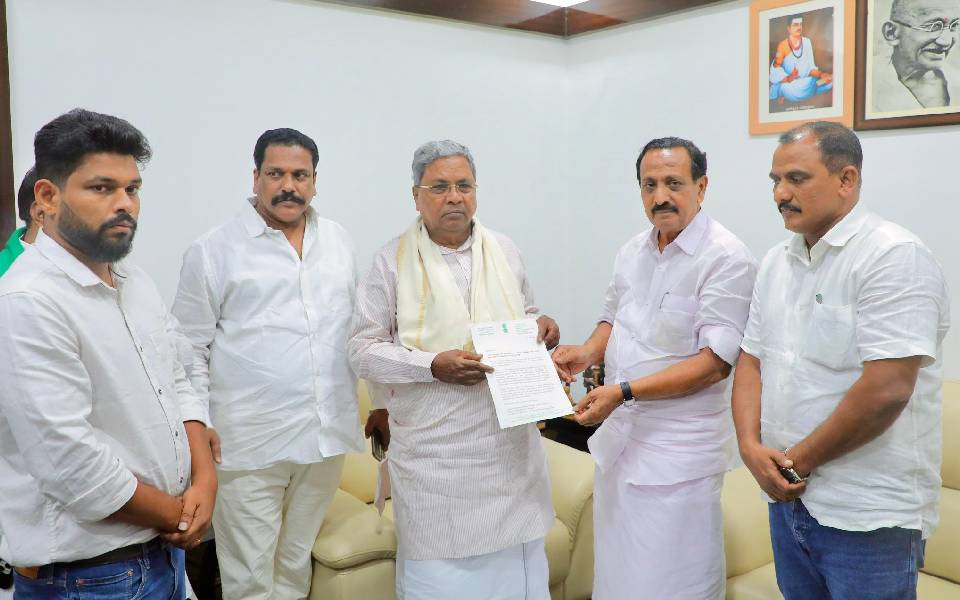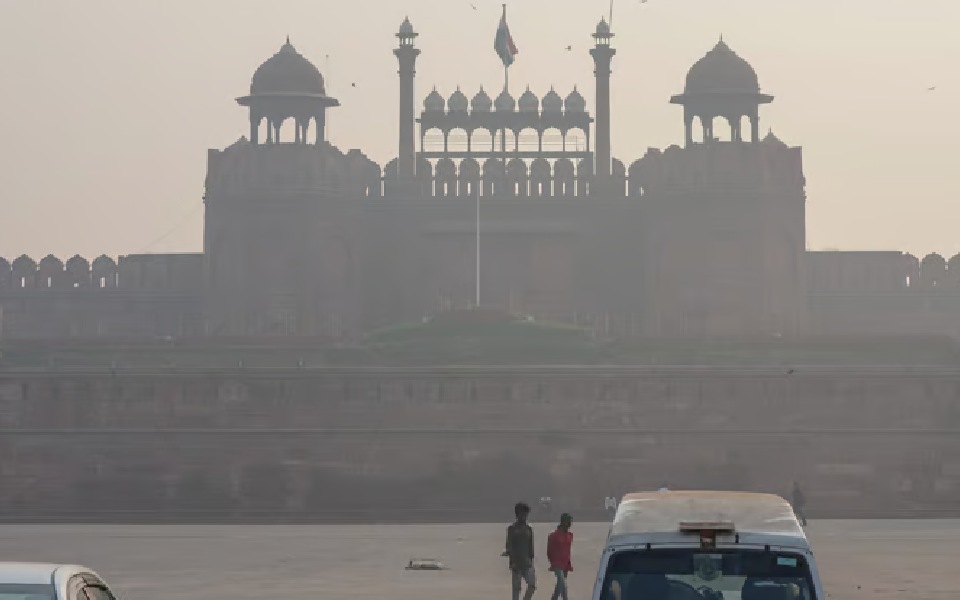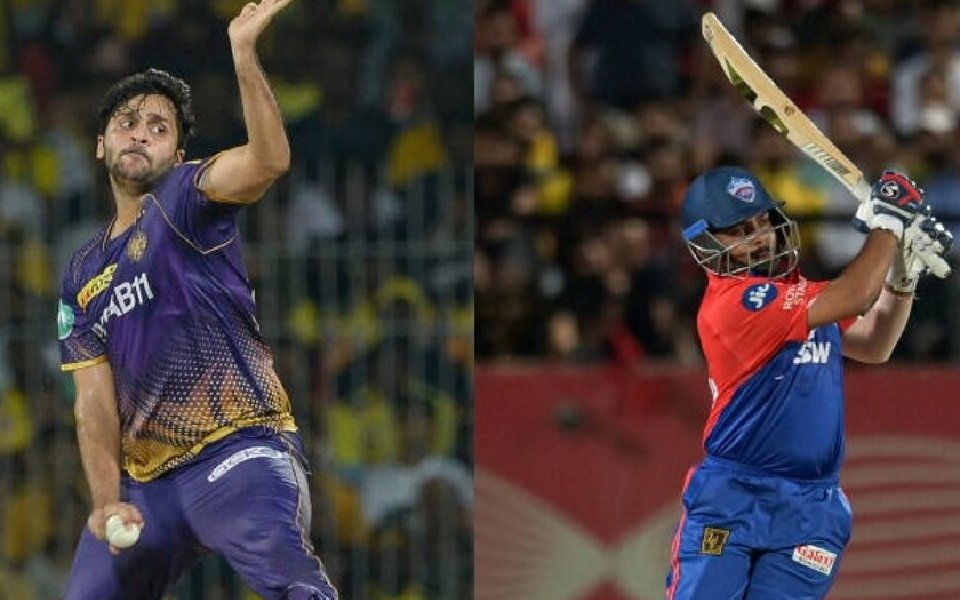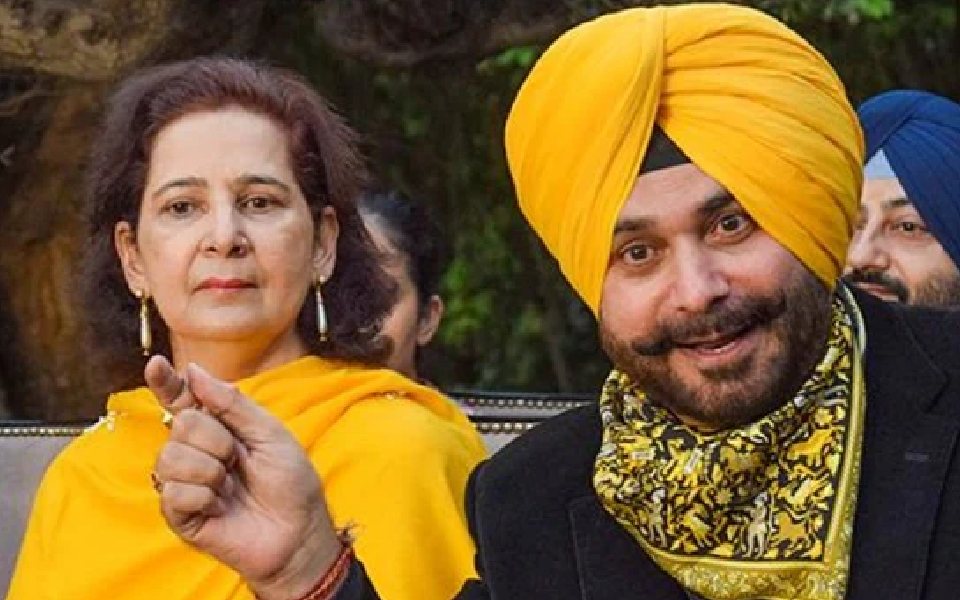Bengaluru, Aug 28: A delegation led by Kerala MP M K Raghavan met Chief Minister Siddaramaiah on Wednesday and requested him to resume search operations to trace the Kozhikode driver and two others who went missing following a massive landslide in Shirur last month.
The incident, which occurred on National Highway 66 on July 16, claimed the lives of eight people.
Raghavan, a Lok Sabha MP from Kozhikode along with Kerala MLA AKM Ashraf and Karwar MLA Satish Krishna Sail met Siddaramaiah in his office today and also submitted a letter to him requesting for permission to bring a dredger for search operations in Gangawali River.
In the letter, the Kerala MP stated,"...recent landslide happened in Shirur has resulted in the missing of three individuals: Arun (from Kerala), Jagannathan and Lokesh. As a representative of Kozhikode, I am profoundly grateful to your government and district administration including police, who has worked day and night with rescue and relief operations effectively coordinating with various state and central agencies to find the missing persons.
"Despite our hard work, we are unable to locate the missing persons. However, we believe that there is still a possibility of finding them with the aid of a dredger. Therefore we respectfully seek your permission to deploy a dredger in Gangawali river to search for the missing individuals," the letter further stated.
The delegation requested the chief minister to give necessary instructions to the district administration of Karwar to resume the rescue operations immediately using a dredger.
According to officials, the search operations were halted on July 28 due to adverse weather conditions, high river current and other factors. Later, Kerala Chief Minister Pinarayi Vijayan wrote a letter to Siddaramaiah requesting him to resume operations to trace the lorry driver from Kozhikode following which the operations were resumed on August 14 but again the search operations were halted due to various factors.
ಕಾರವಾರದ ಶಿರೂರು ಭೂ ಕುಸಿತದಲ್ಲಿ ನಾಪತ್ತೆಯಾಗಿರುವ ಕೇರಳ ನಿವಾಸಿಗಳಾದ ಅರ್ಜುನ್ ಮತ್ತು ಇತರರ ಪತ್ತೆಗೆ ಮತ್ತೆ ಕಾರ್ಯಾಚರಣೆ ಆರಂಭಿಸುವಂತೆ ಕೋರಿ ಕೇರಳ ರಾಜ್ಯದ ಕೋಜಿಕೋಡ್ ಲೋಕಸಭಾ ಕ್ಷೇತ್ರದ ಸಂಸದ ರಾಘವನ್ ನೇತೃತ್ವದ ನಿಯೋಗದವರು ಮುಖ್ಯಮಂತ್ರಿ @siddaramaiah ಅವರನ್ನು ಭೇಟಿಯಾಗಿ ಮನವಿ ಸಲ್ಲಿಸಿದರು. pic.twitter.com/MJYLyy8wzD
— CM of Karnataka (@CMofKarnataka) August 28, 2024
Let the Truth be known. If you read VB and like VB, please be a VB Supporter and Help us deliver the Truth to one and all.
New Delhi, Nov 25: Delhi's air pollution levels remained alarming on Monday, with the capital's 24-hour average AQI reading soaring to 349 from 318 the previous day, even as the Supreme Court slammed the city government and police for a "serious lapse" in implementing GRAP curbs.
The apex court, however, asked the central pollution watchdog to consider restarting physical classes in the schools and colleges of Delhi-NCR, noting that students are being deprived of mid-day meals and lack the wherewithal to attend virtual classes.
According to the SAMEER app, which offers hourly updates on the National Air Quality Index, the AQI was recorded at 218 at 9 am, but it rose to 377 at 7 pm, thanks to a low wind speed.
Seven of the 38 air quality-monitoring stations in Delhi reported AQI levels in the "severe" category at 5:30 pm, with the number rising to 14 at 7 pm.
The latest data from the Central Pollution Control Board (CPCB) said Delhi's 24-hour average AQI, recorded at 4 pm, stood at 349.
Bhavreen Kandhari, an environmentalist, said the AQI has risen due to a combination of stagnant winds that have a speed of less than 10 kilometres per hour and dropping temperatures that trap pollutants close to the ground.
The CPCB categorises the AQI as follows -- 0-50 (good), 51-100 (satisfactory), 101-200 (moderate), 201-300 (poor), 301-400 (very poor), 401-450 (severe) and above 450 (severe plus).
Last week, the city endured its highest recorded AQI for the season, reaching a hazardous 495, prompting the implementation of the Stage-4 restrictions under the Supreme Court-mandated Graded Response Action Plan (GRAP) to curb pollution.
On Monday, the primary pollutant contributing to the deteriorating air quality was PM2.5, with levels recorded at 166.9 micrograms per cubic metre at 4 pm.
These fine particulate matters with a diameter of 2.5 micrometres or less, pose severe health risks as these can penetrate deep into the lungs and enter the bloodstream.
The drop in the air quality follows a week of hazardous levels of pollution, with Delhi's AQI surpassing 450 for the first time this season last Sunday morning.
Although the air quality improved slightly on Thursday and Friday, it worsened again on Saturday, with the AQI returning to the "severe" category.
As evening descended on Monday, a thick layer of mist and smog covered the city, reducing visibility and exacerbating the air-quality crisis.
Meanwhile, the Supreme Court asked the Commission for Air Quality Management (CAQM) to consider restarting physical classes in schools and colleges in the National Capital Region (NCR) and adjoining areas, noting that students are being deprived of mid-day meals and lack the wherewithal to attend virtual classes.
The restrictions on physical classes in schools and colleges were imposed recently due to severe air pollution.
The court censured the Aam Aadmi Party (AAP) government and Delhi Police for a "serious lapse" on their part in strictly implementing the GRAP-4 measures, and directed the CAQM to take action against the erring officials.
A bench of Justices Abhay S Oka and Augustine George Masih said the authorities have made no efforts to implement the GRAP-4 measures.
"It is apparent that the authorities mentioned in GRAP-IV clauses 1, 2 and 3 have made no earnest efforts to implement action under clauses 1 to 3. Some police teams were deputed at a few entry points, that also without any specific instructions," it said.
The Centre's Decision Support System (DSS) for Air Quality Management estimated that vehicular emissions contributed 16.4 per cent to Delhi's pollution on Monday. Stubble burning, another major factor, accounted for 11 per cent of the capital's pollution on Sunday.
The DSS provides daily estimates for vehicular emissions, while the data on stubble burning is typically released the following day.
Meanwhile, the daytime temperature was recorded at 25.8 degrees Celsius, 0.9 notches below the seasonal average, the India Meteorological Department (IMD) said.
Humidity levels fluctuated between 85 per cent and 68 per cent during the day.
The IMD has forecast moderate fog for Tuesday, with the maximum and minimum temperatures likely to hover around 26 degrees Celsius and 12 degrees Celsius respectively.





